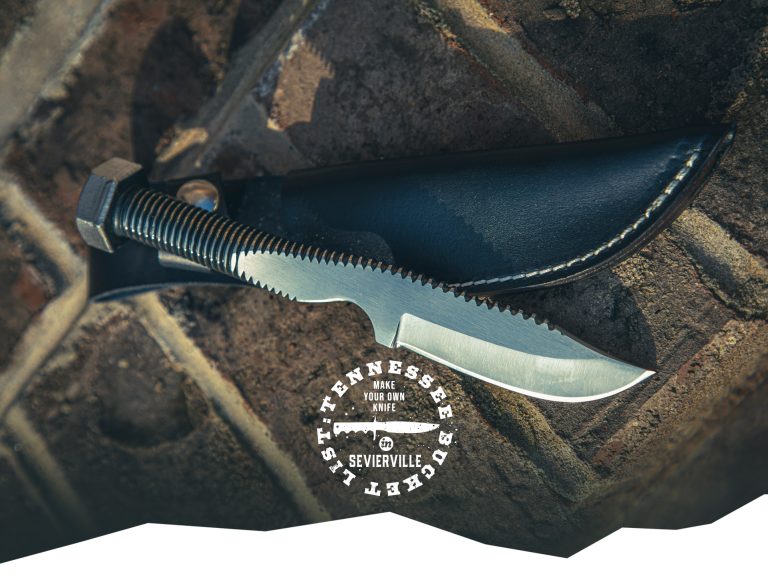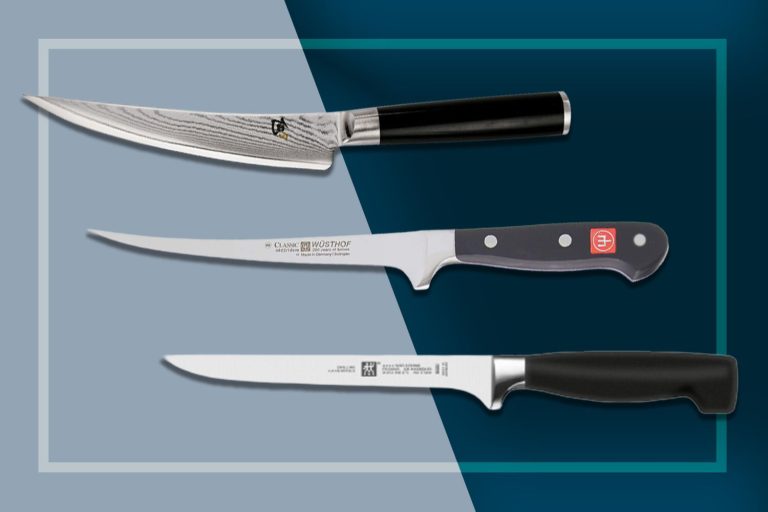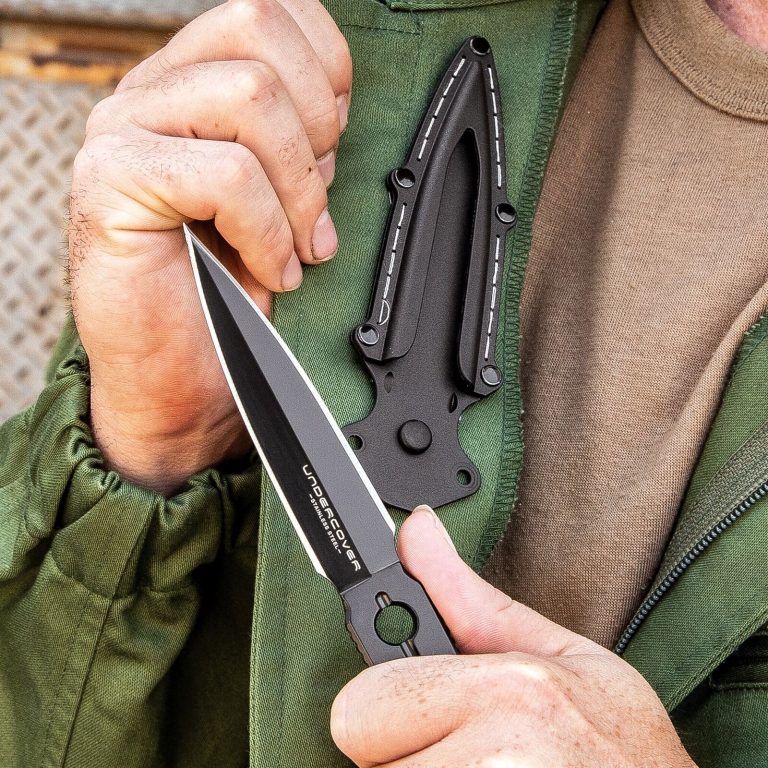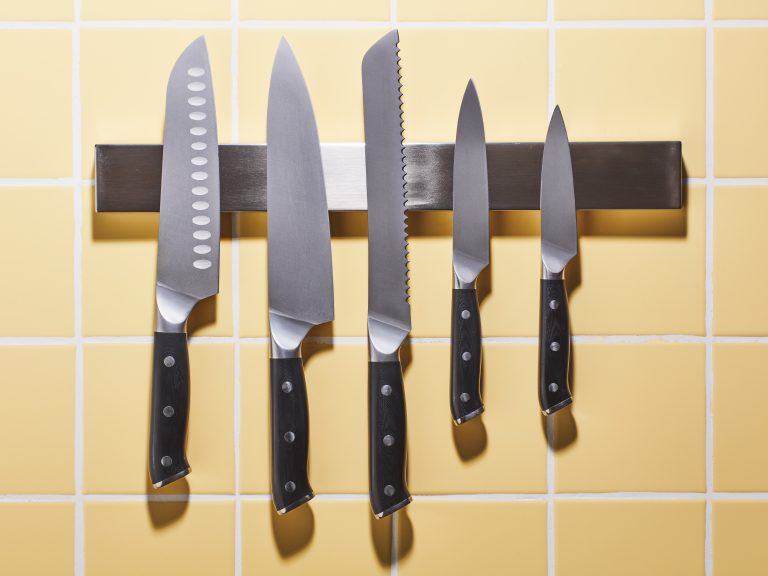Knife Handle Material : The Ultimate Guide to Choosing the Best for Your Blade
Knife handle material is an important factor to consider when choosing a knife. Choosing the right material for your knife handle is essential for achieving the best performance and comfort.
The handle material affects the grip, durability, and aesthetics of the knife. There are various materials available, each with its own unique properties and benefits. Common handle materials include wood, plastic, rubber, and carbon fiber. Wood handles provide a classic and natural look, while plastic handles offer durability and affordability.
Rubber handles offer excellent grip, even in wet conditions, making them suitable for outdoor use. Carbon fiber handles are lightweight and provide a modern, sleek appearance. Consider your specific needs and preferences when selecting a knife handle material.
Importance Of Choosing The Right Knife Handle Material
Choosing the right knife handle material is crucial as it impacts the overall performance and functionality of the knife. One important aspect to consider is the enhancement of comfort and grip. A well-designed handle material can provide a secure and comfortable grip, allowing for better control and reducing the risk of accidents.
Moreover, the choice of handle material also influences the knife’s durability and maintenance. Some materials are more resistant to wear and tear, while others require regular maintenance to prevent damage and preserve their lifespan.
Aside from functionality and durability, aesthetic appeal and style are also key factors to consider. The handle material can greatly impact the visual appeal of the knife, providing an opportunity to express personal style and taste.
Ultimately, selecting the right knife handle material is essential for a comfortable and reliable tool that meets both functional and aesthetic requirements.
Factors To Consider When Choosing A Knife Handle Material
Choosing the right knife handle material is essential for a comfortable and efficient cooking experience. Several factors need to be considered when making this decision:
Durability: The knife handle material should have longevity and resistance to wear and tear, ensuring that it can withstand frequent use without deteriorating.
Grip: Consider the texture and ergonomics of the handle to ensure a secure hold. A handle with a comfortable and non-slip grip will allow for precise control and reduce the risk of accidents.
Maintenance: Ease of cleaning and care is another vital aspect. Opt for materials that are easy to clean and do not require specialized maintenance to keep the handle in good condition.
Aesthetics: The visual appeal of the knife handle material is a personal preference. Choose a material that complements your kitchen aesthetics and reflects your style.
Cost: Budget considerations are important as well. Different knife handle materials have varying costs, so make sure that the material you choose aligns with your budget.
| Factor | Description |
|---|---|
| Durability | Longevity and resistance to wear and tear |
| Grip | Texture and ergonomics for a secure hold |
| Maintenance | Ease of cleaning and care |
| Aesthetics | Visual appeal and personal preferences |
| Cost | Budget considerations |
1. Wood
Wood is a popular choice for knife handle material due to its natural beauty and unique grain patterns. There are various varieties of wood available such as rosewood, olive wood, walnut, and more. Each type of wood offers its own distinct characteristics, adding to the visual appeal of the knife.
Wood handles have their pros and cons. On one hand, they provide a warm and comfortable grip, making it easier to hold and control the knife. Wood also has a natural insulating property, keeping the handle cool to touch even in hot conditions. Additionally, wood handles are often customizable, allowing users to personalize their knives.
However, wood handles require regular maintenance to prevent drying, cracking, or warping. They are more susceptible to water damage and can absorb liquids, causing swelling or rotting if not properly cared for. Moreover, the porous nature of wood can harbor bacteria if not cleaned well, making it less hygienic compared to other materials.

Credit: www.amazon.com
2. Stabilized Wood
Stabilized wood is a popular choice for knife handles due to its increased stability and resistance to moisture. This material goes through a creation process that enhances its durability and longevity. Stabilized burl is a type of stabilized wood that is crafted from natural burls, resulting in a unique and captivating pattern. Reconstructed wood is another popular stabilized wood option, where small wood pieces are combined and solidified with resin to create a cohesive and strong material. These stabilized wood handles offer numerous benefits, including improved strength, enhanced resistance to moisture and temperature changes, and an overall attractive appearance. With their unique patterns and increased stability, stabilized wood handles provide both functionality and aesthetic appeal, making them a top choice for knife enthusiasts.
3. Micarta
| Micarta | Versatile and durable synthetic material |
Micarta is a synthetic material widely used for knife handles due to its versatility and durability. It is available in different types, including Linen, Canvas, Paper, and Carbon Fiber. Each type of Micarta offers unique characteristics and aesthetics.
Linen Micarta is known for its excellent grip and moisture resistance, making it suitable for outdoor activities. Canvas Micarta, on the other hand, has a rougher texture and provides an enhanced grip, ideal for heavy-duty tasks.
Another variant, Paper Micarta, offers a smooth surface, providing a comfortable grip. It is commonly used in chef knives and other culinary tools. Lastly, Carbon Fiber Micarta combines strength and beauty, making it a popular choice among knife enthusiasts.
When it comes to advantages, Micarta handles are highly resistant to impact, moisture, and chemicals. They offer excellent grip even in wet conditions. However, one drawback of Micarta handles is that they can be relatively heavy compared to other handle materials.
In summary, Micarta is a versatile and durable synthetic material that comes in various types. Its numerous advantages, such as impact and moisture resistance, make it an excellent choice for knife handles.
4. G10
The G10 material is a high-strength fiberglass material widely used for knife handles. It is known for its durability and toughness, making it an excellent choice for outdoor and tactical knives. G10 handles have several features and benefits that make them popular among knife enthusiasts.
Firstly, G10 handles are extremely strong and resistant to impact and pressure, making them suitable for heavy-duty applications. They can withstand rough use, ensuring the longevity of the knife.
Moreover, G10 handles have excellent grip and traction, even in wet or slippery conditions. This ensures that the knife remains secure in hand, reducing the risk of accidents.
G10 handles are also resistant to chemicals, moisture, and temperature variations. This makes them durable and suitable for use in various environments.
Common applications of G10 handles include hunting knives, survival knives, and tactical knives. However, it is important to note that G10 handles may add some weight to the knife, which can be a limitation for those seeking a lightweight option.
To sum up, G10 is a high-strength fiberglass material that offers durability, excellent grip, and resistance to chemicals and moisture. While it may add some weight to the knife, it is a popular choice for outdoor and tactical knives due to its reliability and toughness.
5. Carbon Fiber
| Lightweight and strong material |
| Carbon fiber is a popular choice for knife handles due to its lightweight nature and exceptional strength. The material is made up of thin, woven carbon fibers that are highly rigid and resistant to bending or breaking. This makes carbon fiber handles ideal for tasks that require precision and control. |
| Properties and advantages |
| Carbon fiber handles possess several advantageous properties. They offer a high strength-to-weight ratio, allowing for easy maneuverability without sacrificing durability. Carbon fiber is also resistant to corrosion, ensuring long-term performance and longevity. Another benefit is its non-conductive nature, making it ideal for use in electrical or wet environments. |
| Considerations for using carbon fiber handles |
| While carbon fiber handles have numerous benefits, there are a few considerations to keep in mind. Firstly, they can be relatively expensive compared to other handle materials. Additionally, carbon fiber can feel somewhat cold to the touch, which some users may find less comfortable. Lastly, carbon fiber handles may not provide the same level of grip as other materials, so it’s essential to assess personal preferences when selecting a knife. |
6. Stainless Steel
| Knife Handle Material |
| 6. Stainless Steel |
Stainless steel is a popular choice for knife handles due to its sleek and modern look. It offers durability and corrosion resistance, making it suitable for both indoor and outdoor use. There are various varieties of stainless steel handles available, such as titanium, aluminum, and titanium-coated steel, each with its own unique characteristics.
Pros of stainless steel handles include their resistance to rust and easy maintenance. They also provide a comfortable grip and are often lightweight. Additionally, stainless steel handles are known for their longevity, making them a reliable option for knife enthusiasts.
However, it is important to note that stainless steel handles may lack the texture and grip provided by other materials. They can also be susceptible to scratches and can feel cold in extreme temperatures. Consider your specific needs and preferences when selecting a knife handle material.
7. Bone And Horn
Bone and horn are traditional and natural materials often used for knife handles in both historical and contemporary contexts. These materials offer unique aesthetics and carry historical significance. The natural variations and textures of bone and horn add character to the knife handles, making each piece one-of-a-kind.
However, it’s important to note that bone and horn handle materials require proper care as they can be sensitive to moisture and temperature changes. They should be kept dry and away from extreme heat or cold to prevent damage. Regular cleaning and conditioning can help maintain the quality and appearance of bone and horn handles.
While bone and horn handle materials have their advantages, they also come with certain limitations. They may not be as durable as other synthetic materials, and they can be more prone to cracking or chipping. Additionally, some people may have ethical concerns regarding the sourcing of bone and horn materials for knife handles.
8. Synthetic Materials
| Synthetic materials have become popular alternatives to the traditional handle materials in knives. Rubber, polymer, and composite options offer various benefits and considerations.Rubber handles provide excellent grip and are resistant to moisture and heat. They are ideal for outdoor and wet conditions. Polymer handles, on the other hand, are lightweight, durable, and offer a wide range of colors and designs. Composite handles combine different materials to create a balance between durability and aesthetics.When considering synthetic handles, it’s important to evaluate their durability, comfort, and overall performance. Factors such as ergonomics, texture, and maintenance should be taken into account. Additionally, synthetic handles often come with added features like finger grooves and palm swells to enhance grip and control.Synthetic materials have revolutionized the knife industry by offering innovative and practical alternatives to traditional handle materials. With a wide range of options available, knife enthusiasts can choose the handle material that best suits their needs and preferences. |
How To Choose The Best Knife Handle Material For Your Needs
When choosing the best knife handle material for your needs, it’s important to assess your personal preferences and priorities. Consider the application and usage scenarios in which the knife will be used. Is it for everyday kitchen tasks or outdoor adventures? Testing handles for comfort, grip, and balance is essential to ensure a good user experience. You want a handle that feels comfortable in your hand and provides a secure grip, especially during precise cutting tasks.
Another factor to consider is balancing your budget with long-term durability. Some handle materials may be more expensive but offer better durability and longevity. On the other hand, there are more affordable options that still provide decent performance. Ultimately, you need to find the right balance between your budget and the desired lifespan of the handle.
When choosing your knife handle material, keep these factors in mind to make an informed decision that suits your needs and preferences.
Conclusion
To wrap up, choosing the right material for your knife handle is crucial for both functionality and aesthetics. The handle material you choose can greatly impact the knife’s overall performance and its ability to withstand different conditions. From the classic beauty of wood to the durability of G-10, there are a plethora of options available to suit your personal preferences and needs.
It’s essential to consider factors such as grip, maintenance, and overall comfort when selecting the material. Additionally, keep in mind that different materials may require different care and cleaning techniques. Ultimately, the ideal handle material will provide a balance of strength, aesthetics, and comfort.
By carefully considering your requirements and doing thorough research, you can ensure that the material you choose will enhance your knife’s performance and make it a reliable tool for years to come.






